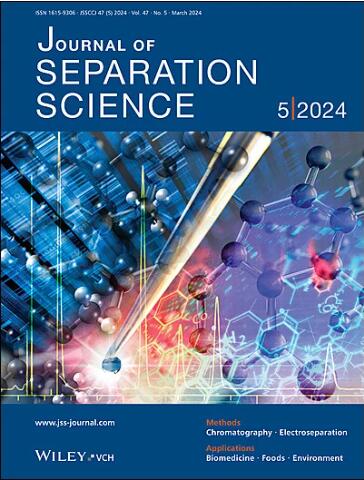A Stable Cinchona Chiral Stationary Phase Based on Mercaptopropylsilane Modified Polydivinylbenzene Microspheres
Abstract
In this work, the preparation of a low-swelling mercaptopropyltrimethoxysilane (MPTMS)-modified polydivinylbenzene micropheres matrix for cinchona chiral stationary phases is reported. It was found that MPTMS preferentially deposits within the smaller pores of PDVB particles during the sol–gel process, leading to an increased average pore size and a narrower pore size distribution. The swelling resistance of the particles increased in proportion to the amount of MPTMS that was loaded. The measured swelling propensity (SP) value for PDVB-5SH-QN in methanol and acetonitrile are 0.097 and 0.226, respectively, which are considerably lower than the values of 0.759 and 1.142 obtained for polydivinylbenzene microspheres. The performance of the chiral column was evaluated using a sample set containing 20 FMOC-amino acids. The results indicated that the modification of organosilane led to enhancements in column efficiency. The mass transfer resistance coefficient in the Van Deemter equation for PDVB-5SH-QN (C = 1.86 µs; standard error = 0.11) is comparable to that for SiO2-QN (C = 2.74 µs; standard error = 0.13). The enantioselectivity exhibited by the column is analogous to that observed in SiO2-QN. Under alkaline mobile phase conditions, the polymer-based stationary exhibited excellent stability and reproducibility.




 求助内容:
求助内容: 应助结果提醒方式:
应助结果提醒方式:


